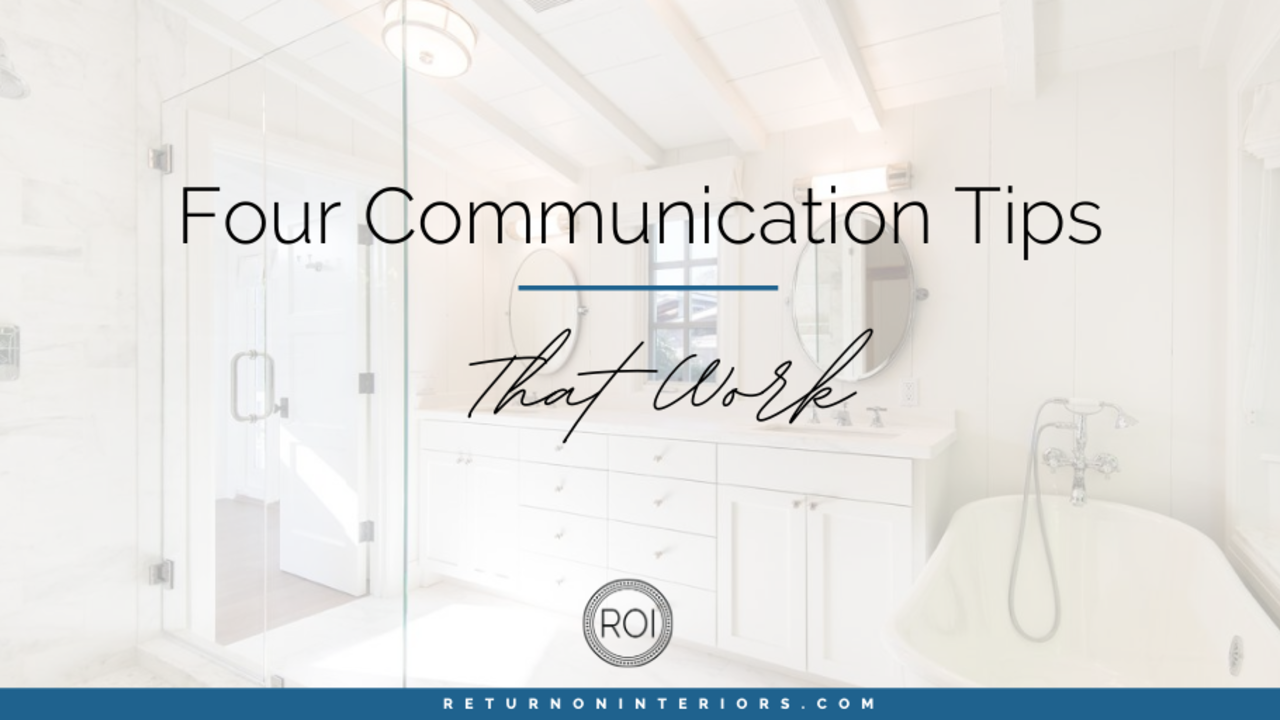
4 Communication Techniques That Work
Most of our greatest achievements AND our worst setbacks in our companies come down to one thing - communication. When we're good at communicating with our clients, employees, and suppliers, everything can run like a well-oiled machine. But forget to tell someone about a change, or decide not to tell your client that things are running late - well that's when the wheels come off, right?! Here are 4 communications techniques that will help you stay on track and keep your clients coming back!
1. Practice Active Listening
Have you ever had a conversation with someone and you realize they're looking over your shoulder? Or they're tapping away at their phone? I know...so rude! But, there are other clues that you aren't really listening, even if you're staring right at the speaker. Like when you interrupt, or go off on a tangent, or change the subject abruptly. And THAT is also rude. When you're clients are talking, be very careful to really listen to them. The info that they give you could make or break your progress, or could keep you from getting the job in the first place! Active listening requires you to really hear your clients, and to give them clues that you are listening to them. Like saying "uh huh" or nodding your head - both of those things show that you are paying attention. Take in what they say and remember it. If it's important to them, it should be important to YOU.
2. Ask Questions
This one is key. First of all, it can ALSO show you're listening when you ask questions about what the person told you. But it can also give you information that wasn't said, or can help you dig deeper. I also like to ask questions to be sure that we're all on the same page. I want to know that my vendor is telling me everything I need to know about shipping, for example. Or that my client really did say that puce is her favorite color. Because if that isn't what she said - we're going to have issues. HA! Seriously though, asking questions keeps everyone in the loop and avoids mistakes and issues later.
3. Repeat Back and Follow Up
Another great communication tool is to repeat back what you've heard. That doesn't mean you sit there like a parrot just spouting back what someone says. But for an important point in the conversation it can help to verify and acknowledge. So you might say to a client: "It sounds like what you're describing is a lot of blue - is blue your favorite color?" Or with a contractor you could say: "Whoa, I'm hearing that every part of the job is behind schedule - is that what you're saying?" If you repeat the important points, it ensures that you're taking in the right information, but it ALSO shows them that you are listening to them. They'll appreciate it! Another key to this repeating pattern is to send emails that list points that came up in a conversation. That puts it in writing - which is important for big decisions - and it also gives them a chance to correct something if it wasn't clear when they said it.
4. Person-to-Person Is Still Important
I know we all love a quick text or a simple email, but face-to-face communication is still so key for business. Your clients want to see you - even if it's on Zoom. It shows them that you are super-involved in every aspect of their job and that you're managing it effectively. If they're sick of Zoom, at least set a time to talk on the phone. The same goes for contractors and subs. You still need to do job site visits, of course with masks and distance. It's impossible to see what's happening or to stay on top of a project without being there or at least having FaceTime video calls.
Too often we get in a rush and just want to send an email very quickly, but sometimes that leads to hurt feelings or missed opportunities. So be sure to talk to people, too! You can always follow up with an email to have a record.
Keep your clients up to date with regular communication and they'll love you forever! And I have the tool that will help. Just download my FREE Client Communication Log here! Good luck!



 Get almost 50
Get almost 50



